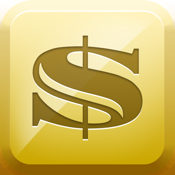
Since this call feature poses an investment or call risk to investors who otherwise prefer to hold their high-yielding bond until it matures, callable bonds tend to offer higher coupon rates than noncallable bonds to attract investors. The yield to call calculator helps you determine how much you can earn if you invested in a callable bond and the bond issuer calls the bond before its maturity date.

We can help you understand the relationship between a call and put option with our put call parity calculator. Using our earlier example, assuming a bond issuer decides to use their call option for a bond, it means that you will not be able to earn your expected $1,500! The bond call feature protects the issuer when the market interest rate drops and provides them the opportunity to refinance their loans at a lower market interest rate or reissue the bond at a lower coupon rate to reduce cost. In addition, some callable bonds come with a predetermined date, called call protection, after which the issuer can redeem the bond others are freely callable by the issuer at any time. Therefore, some bonds include a call option feature that gives bond issuers the right to refund or buy back their issued bonds at a call price lower than the market price before the bond matures. On a side not, you may want to use a risk calculator to help you assess the risks associated with various investment options.īond issuers don't have the same flexibility when the market interest rate fluctuates they must continue making the agreed coupon payment to investors. However, if other comparable investments offer less interest rate than you're earning from the bond, you're less likely to sell it, which means the bond's market price will be higher than the price the bond was issued (i.e., the bond's face value). If you ever decide that you don't want to hold the bond anymore, you can always sell it at the current market price to interested investors. When the bond matures, the issuer repays the loan they borrowed from you, the original $1,000 invested as principal, while you earned $100 × 15 = $1500 through the years for holding the bond.

That means if you invest $1,000 in a bond with an interest of 10% per annum (each year) for 15 years, you will earn $1000 * 10% = $100 every year of the bond 15-year term.

So, as long as you have the bond, you're a bondholder, and you will continue to earn annual interests or bond yield, paid by the issuer, which can be a corporation such as a bank, private company, or the government. You're lending money to the bond issuer at a fixed interest rate for several years when you invest in a bond. Yield to call (YTC) determines the return on investment a bondholder gets until the bond's call date.


 0 kommentar(er)
0 kommentar(er)
